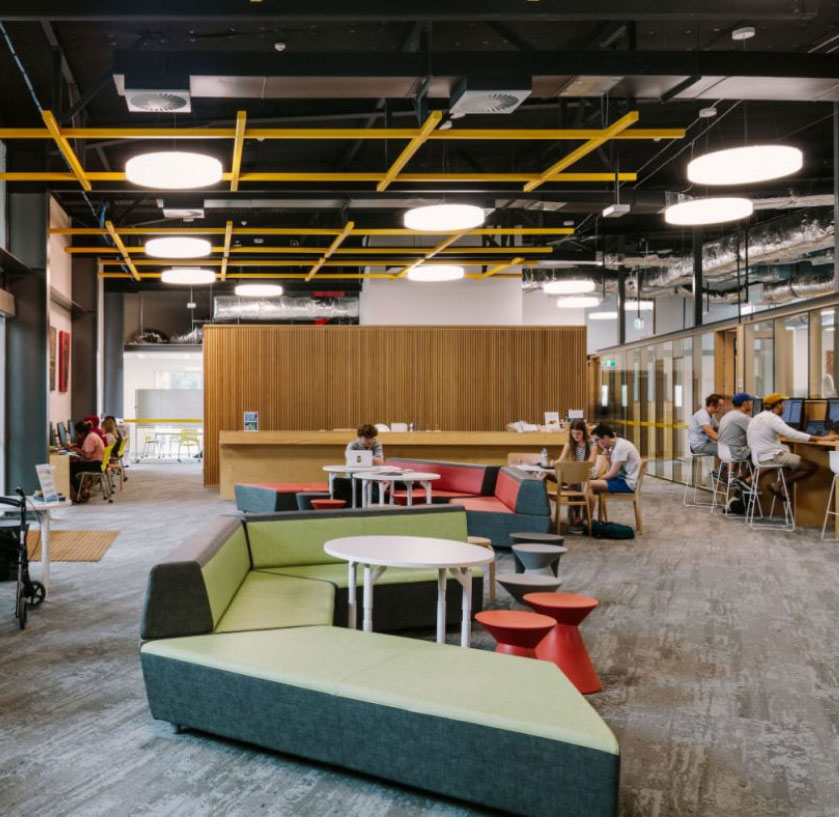May 23, 2023
A 2050 vision for Australian research and innovation
The Universities Accord process challenges us to think big about Australia’s future. Professor Mary O’Kane and the review panel have asked for ideas over a 20-to-30-year horizon, which begs the question: what do we think Australian research and innovation should look like in 2050?
Much of the current debate focuses on inputs. When announcing the Cutler Review of the national innovation system (which took place alongside the Bradley Review) in 2008, then minister Kim Carr lamented that Australian government support for research and innovation as a percentage of GDP had dropped from 0.75 per cent in 1993-94 to 0.59 per cent in 2006-07. The latest figures show that it now stands at 0.49 per cent of GDP.
There is clearly a debate to be had about the level of public investment in research and innovation. But we should also be talking about what outcomes and impact we want from those investments, and how best to achieve them.
A recent Innovative Research Universities discussion paper looked at major trends in Australian research over the last 20 years. Since the Dawkins reforms, the growth in high-quality university research, and the spreading of that knowledge and innovation to more communities across the country, has been a national success story. But more recently, we are seeing a shift away from basic to applied research, a prioritisation of STEM disciplines (science, technology, engineering and maths) and a concentration of funding in a small number of universities.
The Accord is an opportunity to refocus on the outcomes that we want for Australia and to make sure that our research system is set up to help deliver them.
As a start, here are five big ideas for Australian research and innovation by 2050.
First, we have to deal with rapid technological change. Leaders at the G7 meeting in Japan last week were right to focus on AI as well as Ukraine. Australia should be across the cutting-edge of emerging critical technologies, but we should be balancing that investment in tech with research into its risks, and strengthening social cohesion and our governance and ethical capabilities.
Second, we have to figure out where Australian industries and jobs will be in 2050. We know that research and innovation are major drivers of productivity. In its latest five-year report, the Productivity Commission notes that the nature of the Australian economy is changing, requiring new ways of combining diverse perspectives, not simply more STEM skills. And innovation will need to be more inclusive, so that the resulting economic growth does not exacerbate inequality.
Third, we should be aiming for major advances in Indigenous self-determination and the relationship between Indigenous and non-Indigenous Australia. This requires a rethinking of the way Indigenous-led research is supported across all fields – not “integrating” Indigenous knowledges but creating innovative models that combine knowledges and perspectives in new ways.
Fourth, we have to face up to climate change and ensure a sustainable future for Australia. Research and innovation will help protect our unique environment and drive the energy transition, but we need to ensure that this transition is just and equitable for communities across the country.
Finally, we have to figure out our place in the world in an era of major geopolitical change and competition. This will require research and innovation for new defence capabilities but also much more. A deep knowledge and understanding of the peoples, cultures and languages of our region will be a sovereign capability every bit as important as advanced manufacturing.
Achieving these ambitions by 2050 will require new approaches to research and innovation, not just pumping more money into the existing system. We should aim for greater equity for students in higher education and also greater equity in university research and its impacts.
In the US, the CHIPS and Science Act both increases federal investment and also spreads that investment out to under-served institutions and communities. Further concentration of research and innovation in Australia will not deliver the impact we need right across the country.
The focus on STEM should be balanced with greater investment in the humanities, arts and social sciences and in new interdisciplinary approaches. And government investment in R&D should recognise the unique role of universities in generating new knowledge and technologies.
Investment in commercialisation should be balanced with investment in fundamental research – the example of Taiwan shows how prioritising corporate R&D can mask an erosion of basic research and important long-term capabilities.
Just because a particular university has an established research strength in a specific field now, that institution – and the communities it serves – should not be locked in to only one specialisation for the future.
Wise investments in universities provide both the knowledge and capabilities that we need today, while also helping industries and communities adapt and progress into the future. In developing a Universities Accord, let’s be clear about what we want that future to look like.






